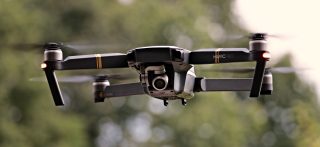 Future of Drone Delivery
Future of Drone Delivery
The prospect of drone delivery is nothing new and has made headlines with companies like Domino’s delivering the first drone delivered pizza, but are drone deliveries economically feasible and practical?
Lots of concerns have circled the drone delivery market including: safety, air space, security and reliability. Despite some companies like UPS and Amazon publicly botching test flights, the public seems to still be strongly interested in getting their next pizza or package through drone delivery. There are so many concerns related to drone deliveries. For example, would medical supplies and prescriptions be off limits for drone deliveries?
Some Questions to consider related to drone deliveries
- Safety
- What happens when a drone malfunctions and falls out of the sky and hits you while you are walking down the street? Will there be a special type of insurance for commercial drone deliveries?
- Air Space
- Larger drones whether used for commercial or personal use require registration with the FAA . Will a new special license be given to commercial drone companies that dispatch delivery drones? Will we see the “Uber” of drone deliveries soon? What happens if air traffic becomes worse than highway traffic?
- Security
- Most high tech drones are built with GPS (Global Positioning System), all delivery drones are built with GPS capabilities. So will there be a panic response code sent to dispatch when a drone is shot out of the sky? Will we see a new waive of drone theft from people sabotaging drones carrying expensive payloads?
- Reliability
- What will be the success rate of a drone delivery? Will it be better than a delivery driver can offer?
Despite these complex concerns, large box stores still seem to show a lot of interest in pursuing drone deliveries. Below are some proposed solutions to the concerns raised above.
- Safety
- Perhaps all drones could have a built in parachute that could be deployed in the event of a malfunction. Deploying a parachute would slow down the descent of the drone and would soften the blow if one smacks you in the head as your walking down the street.
- Air Space
- Requiring all commercial drone delivery companies register each drone and limit the number of drones each company can have airborne at a time could reduce the number of drones in flight and reduce air traffic.
- Security
- There is a Silicon Valley startup that has created a Carbon Fiber cage which is attached to the bottom of the drone and acts as a carriage for the package. Perhaps the cage could have a locking mechanism that could be unlocked by the intended recipients phone using LBE (low energy bluetooth) signal much like how phone to POS systems handshake a transaction.
- Reliability
- Many postal companies leave the package at your front door which i’m sure reduces the reliability of the actual intended recipient receiving the package. So it will be interesting to see which method of delivery will have a higher rate of reliability.
Some say all of the drone delivery talk and test flights is just good viral marketing by large box stores, some say it’s the future of small package delivery. Zippykind is in the business of creating software to help products and people get from point A to Point B faster and more efficiently. We believe there is a huge market for drone delivery and that drone delivery can be a more practical solution than traditional methods of delivery.
